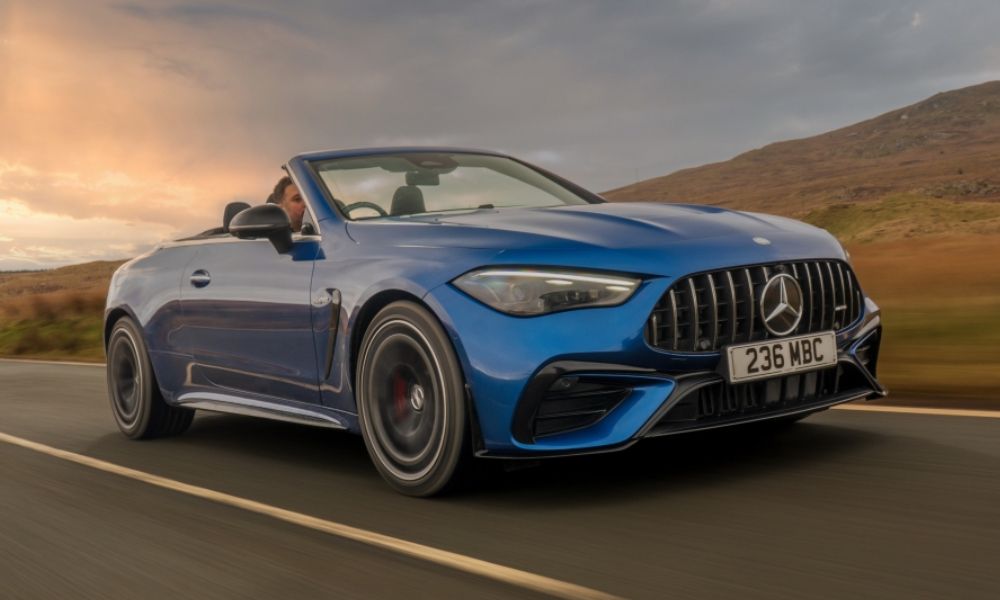 BHPian @ppy.tbhp recently shared this with other enthusiasts:It’s heartbreaking to see and read about the tragic loss of life in this Tata Harrier EV incident. A life gone, in such an unexpected and devastating way. may the departed soul rest in peace. My deepest condolences to the grieving family.This news struck me deeply because I have personally experienced a very similar situation with my friend’s Tata Nexon EV XZ+ LUX (one of the first EVs Tata sold in large numbers).Issue Faced Due To Inadequate Rear Drum BrakesA while back, my friend and I collected the Nexon EV XZ+ LUX post routine service from Jaika Tata Motors , Nagpur. The car was freshly washed, handed over to us with a gate pass, and we left the service center. On our way, we stopped at a restaurant with ramp-style parking – quite similar to the conditions in the Harrier case. I carefully parked the car on the ramp in a designated spot, ensured the handbrake was fully applied, and we went inside. But on returning, I was shocked and terrified to see the Nexon EV had rolled back on its own and was sitting in the middle of the road, dangerously exposed to oncoming traffic. We immediately rushed the car back to the service center and confronted the staff, demanding an explanation. The service team tested the vehicle on their old-school washing ramp, and to our shock, the Nexon EV rolled down the entire ramp on its own – no matter how tightly the parking brake was pulled.The Root Cause Became Evident:The first-gen Tata Nexon EVs came with drum brakes at the rear. Although the EV was heavier than the ICE Nexon, it used the same rear drum brakes as the ICE version. These brakes often lacked the holding power to keep the EV stationary on a ramp using only the parking brake – especially after the vehicle had been pressure washed and standing on a Ramp or bridge uphill slopes. When pressure-washed, the drum brakes failed to hold the car on an incline. Unlike ICE cars, the EV had no gear or engine resistance for added safety – meaning the only way to keep it stationary on a slope was for the driver to remain inside pressing the brake pedal. The service team checked the brake drums, pad thickness, and all adjustments, but ultimately admitted there was nothing they could do to improve parking brake performance. What shocked me even more was what the washing bay personnel at Jaika TATA Motors, Nagpur openly admitted: none of the Tata vehicles – especially the heavier diesel ones and EVs – held properly on their washing ramps when wet with only Handbrakes/parking brakes applied. Their “solution” was to keep wooden logs ready to block the wheels of EVs while washing them to prevent a roll back on vehicle washing ramp. At that moment, we decided we would get rid of the vehicle as soon as possible. My friend and I shot emails to Tata officials with videos of the incident, demanding an explanation. Later, Tata did upgrade the brakes on the newer Nexon EV Max to all four disc brakes, which improved holding capability. But for the early Nexon EV owners, this was, and still is a serious safety concern. This was an eye-opening and disturbing experience. While thankfully no one was hurt in my case, the Harrier EV incident shows just how catastrophic the consequences can be if anything goes wrong. I’m sharing this experience here to raise awareness among fellow Tata EV owners. Please be extra cautious while parking on slopes/ramps, especially after washing. Sometimes, even a fully engaged handbrake/parking brake may not be enough.Check out BHPian comments for more insights and information.
BHPian @ppy.tbhp recently shared this with other enthusiasts:It’s heartbreaking to see and read about the tragic loss of life in this Tata Harrier EV incident. A life gone, in such an unexpected and devastating way. may the departed soul rest in peace. My deepest condolences to the grieving family.This news struck me deeply because I have personally experienced a very similar situation with my friend’s Tata Nexon EV XZ+ LUX (one of the first EVs Tata sold in large numbers).Issue Faced Due To Inadequate Rear Drum BrakesA while back, my friend and I collected the Nexon EV XZ+ LUX post routine service from Jaika Tata Motors , Nagpur. The car was freshly washed, handed over to us with a gate pass, and we left the service center. On our way, we stopped at a restaurant with ramp-style parking – quite similar to the conditions in the Harrier case. I carefully parked the car on the ramp in a designated spot, ensured the handbrake was fully applied, and we went inside. But on returning, I was shocked and terrified to see the Nexon EV had rolled back on its own and was sitting in the middle of the road, dangerously exposed to oncoming traffic. We immediately rushed the car back to the service center and confronted the staff, demanding an explanation. The service team tested the vehicle on their old-school washing ramp, and to our shock, the Nexon EV rolled down the entire ramp on its own – no matter how tightly the parking brake was pulled.The Root Cause Became Evident:The first-gen Tata Nexon EVs came with drum brakes at the rear. Although the EV was heavier than the ICE Nexon, it used the same rear drum brakes as the ICE version. These brakes often lacked the holding power to keep the EV stationary on a ramp using only the parking brake – especially after the vehicle had been pressure washed and standing on a Ramp or bridge uphill slopes. When pressure-washed, the drum brakes failed to hold the car on an incline. Unlike ICE cars, the EV had no gear or engine resistance for added safety – meaning the only way to keep it stationary on a slope was for the driver to remain inside pressing the brake pedal. The service team checked the brake drums, pad thickness, and all adjustments, but ultimately admitted there was nothing they could do to improve parking brake performance. What shocked me even more was what the washing bay personnel at Jaika TATA Motors, Nagpur openly admitted: none of the Tata vehicles – especially the heavier diesel ones and EVs – held properly on their washing ramps when wet with only Handbrakes/parking brakes applied. Their “solution” was to keep wooden logs ready to block the wheels of EVs while washing them to prevent a roll back on vehicle washing ramp. At that moment, we decided we would get rid of the vehicle as soon as possible. My friend and I shot emails to Tata officials with videos of the incident, demanding an explanation. Later, Tata did upgrade the brakes on the newer Nexon EV Max to all four disc brakes, which improved holding capability. But for the early Nexon EV owners, this was, and still is a serious safety concern. This was an eye-opening and disturbing experience. While thankfully no one was hurt in my case, the Harrier EV incident shows just how catastrophic the consequences can be if anything goes wrong. I’m sharing this experience here to raise awareness among fellow Tata EV owners. Please be extra cautious while parking on slopes/ramps, especially after washing. Sometimes, even a fully engaged handbrake/parking brake may not be enough.Check out BHPian comments for more insights and information.






